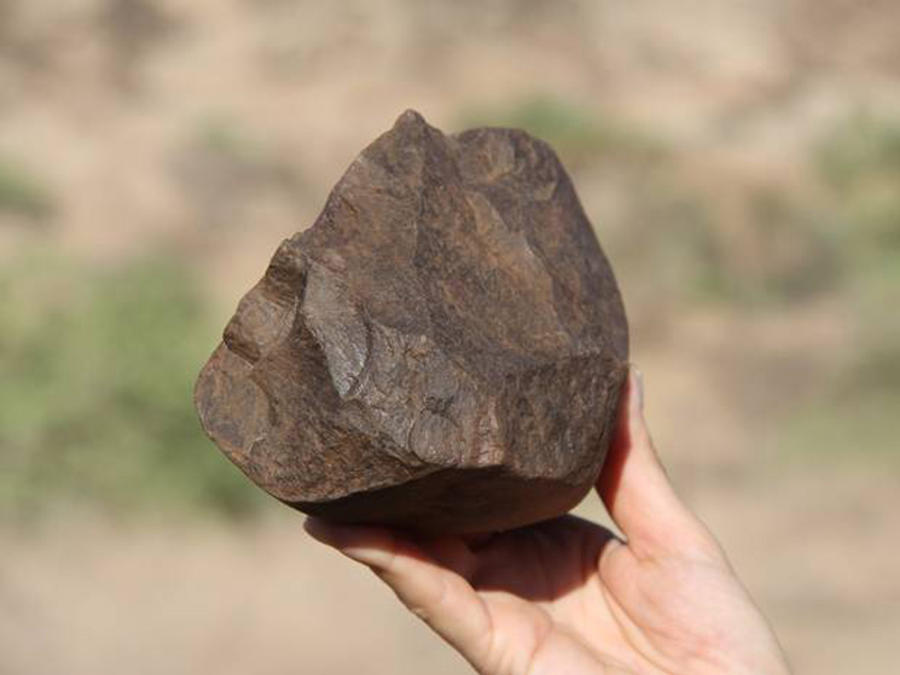It was a momentous discovery, and the archaeologists knew it. The crude stone artifacts they had unearthed bore the telltale scars of knapping, a prehistoric technique for sharpening rocks into blades. Based on past geological surveys of the ravine in which they were found, these rudimentary knives appeared to be at least 2.4 million years old. To pinpoint their exact age, the archaeologists, led by Sonia Harmand of Stony Brook University, called upon two of the world’s top experts at dating ancient sediments: Columbia geologists Christopher Lepre and Dennis Kent ’74GSAS.
Lepre, who has been conducting fieldwork in Africa for two decades, arrived in the desert badlands of northwestern Kenya a few days after Harmand’s team discovered the tools there in the summer of 2011. He spent several weeks at the excavation site, collecting hundreds of samples of mudstone and volcanic ash. Upon returning to Columbia’s Lamont-Doherty Earth Observatory, Lepre worked with Kent, an innovator of laboratory-based analytic techniques, to determine when the sediments had accumulated and hardened around the tools. Among the methods they used was one called magnetostratigraphy, in which the physical orientation of tiny mineral grains locked inside the sediments is matched with the earth’s past magnetic cycles.
This spring, Lepre and Kent, together with Harmand and an international team of archaeologists and earth scientists who worked for two years to verify the analysis, finally announced their stunning conclusion: the stone tools were buried 3.3 million years ago. This means they are not only the oldest stone tools ever found — seven hundred thousand years older than similar artifacts discovered in Ethiopia in the 1990s — but they actually predate the earliest fossil record of the genus Homo, which includes modern humans, by five hundred thousand years. This raises two possibilities that, say the scientists, are equally fascinating: either our human ancestors emerged much earlier than is commonly believed, or another line of highly intelligent primates, occupying a different branch of the evolutionary tree, possessed the same sort of toolmaking ability that has traditionally been considered the exclusive domain of the Homo group.
“To smash together two rocks at an angle so as to break off sharp-edged fragments required forethought, abstract thinking, and a remarkable degree of manual dexterity,” says Lepre. “The prospect that somebody else was turning rocks into cutting instruments half a million years before our earliest known ancestors were walking around northern Africa rewrites the book on everything we thought we knew about early tool usage.”




